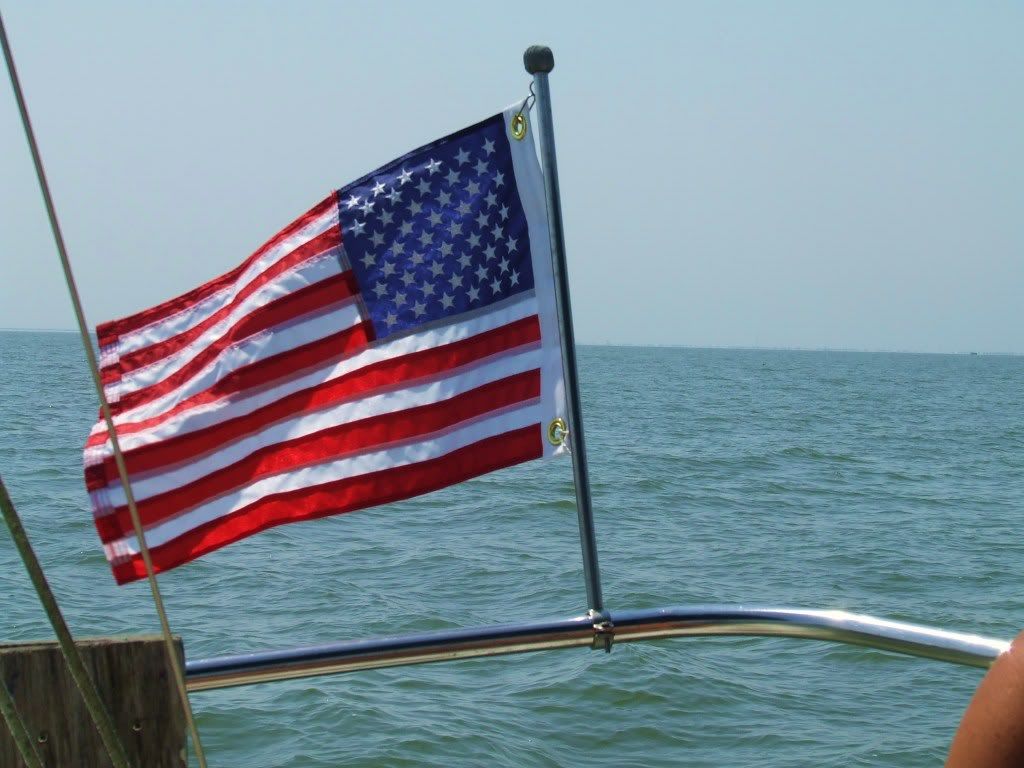New pencil zinc on the left, and the (missing) zinc that was removed from our heat exchanger on the right.
When I recently wrote a post about engine maintenance, a reader stated that he noticed we didn't mention anything about our engine zinc. Engine zinc?! Ken and I have both flipped through our Universal 25 manual several times, and we've never seen anything about a zinc. Did we miss something?
After looking into this on the web, I learned that we do indeed have an engine zinc, often called a pencil zinc. It's located in the bottom of our heat exchanger, and for some reason was left out of the owner's manual. Crap! No wonder we never read anything about this zinc.
I've learned that inside the heat exchanger, hot coolant (50/50 mixture of anti-freeze and water) runs through small tubes that sit in cold seawater. The seawater absorbs the heat, which is discharged into the exhaust system then out of the boat's transom. With all that water, the zinc is necessary to protect the other metals from corrosion ... thus protecting the engine.
Ken found the location of the zinc pretty easily. It's attached to the winterizing drain plug at the bottom of the heat exchanger. For those not familiar with the looks of a heat exchanger, check out the picture below. It's the long horizontal tube that lies across the back of the engine. You can't see the zinc in the picture, but it's easy to find.
When Ken removed the zinc, there was nothing left. We've owned Nirvana for over three years so we weren't surprised. The zinc should be checked every 3-4 months and replaced at least every year ... even if it looks fine.
There are different sizes of zincs, and the proper size for the engine is determined by the size wrench that fits the hex head of the drain plug. A 7/16" wrench = 1/8" thread, a 9/16" = 1/4" thread, and 11/16" = 3/8" thread. Ken was able to find the zinc we needed at West Marine for about $10 bucks ... or at least he thought he had. However, when he tried to put the new zinc in the heat exchanger it wouldn't fit. I had read that some folks find the zinc to be too long and cut it, but our zinc seemed to be too thick. After grabbing a mirror to get a better look, we quickly realized the problem. The hole was heavily corroded, thus making the new zinc too thick.
What to do now? After more research, Ken has decided to remove the heat exchanger. We're going to bring it to a local radiator shop and have them boil it. Ken's then going to replace the gaskets along with the zinc then re-install the heat exchanger. This is probably a good time to replace the hoses and clamps too. Better now than later!
We're so grateful that one of our readers mentioned the zinc to us. If he hadn't, we may have ended up having to buy a new heat exchanger ... or a new engine!
While this is yet another delay in sailing this Summer, we're glad to learn about all of this now. The more we know about our boat before cruising, the better. With the recent maintenance on our engine, our quadrant (radial wheel drive) and now this ... I'm feeling like I know so much more than I did two months ago. I'm getting a broad sense of how an engine works. I've never had a desire to learn how to work on my car, but our boat ... that's another story.
Hasta luego ... until then. Mid-Life Cruising!












































